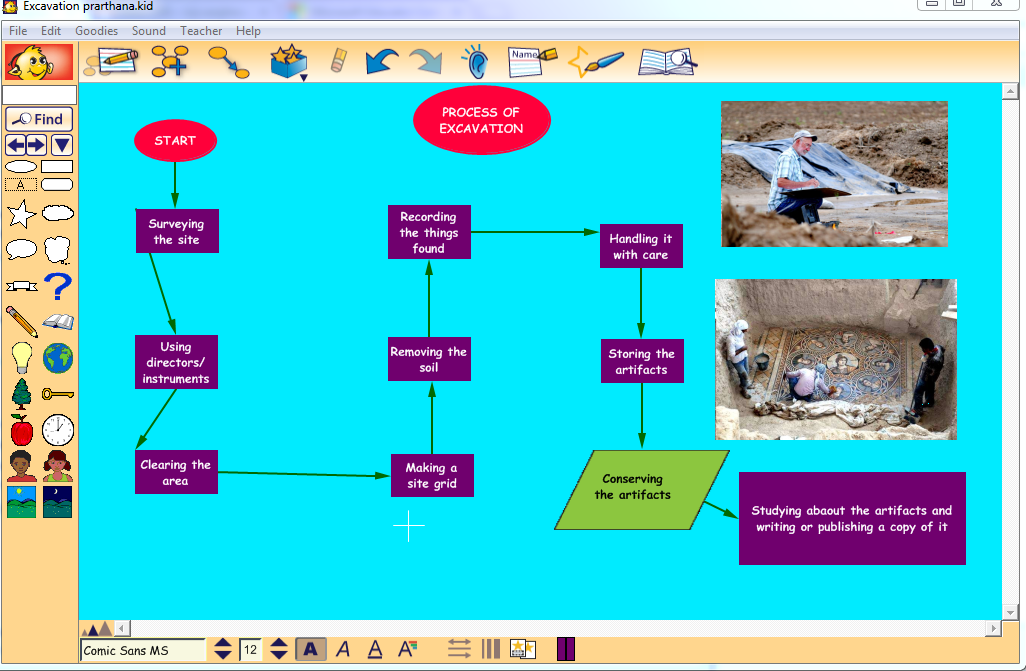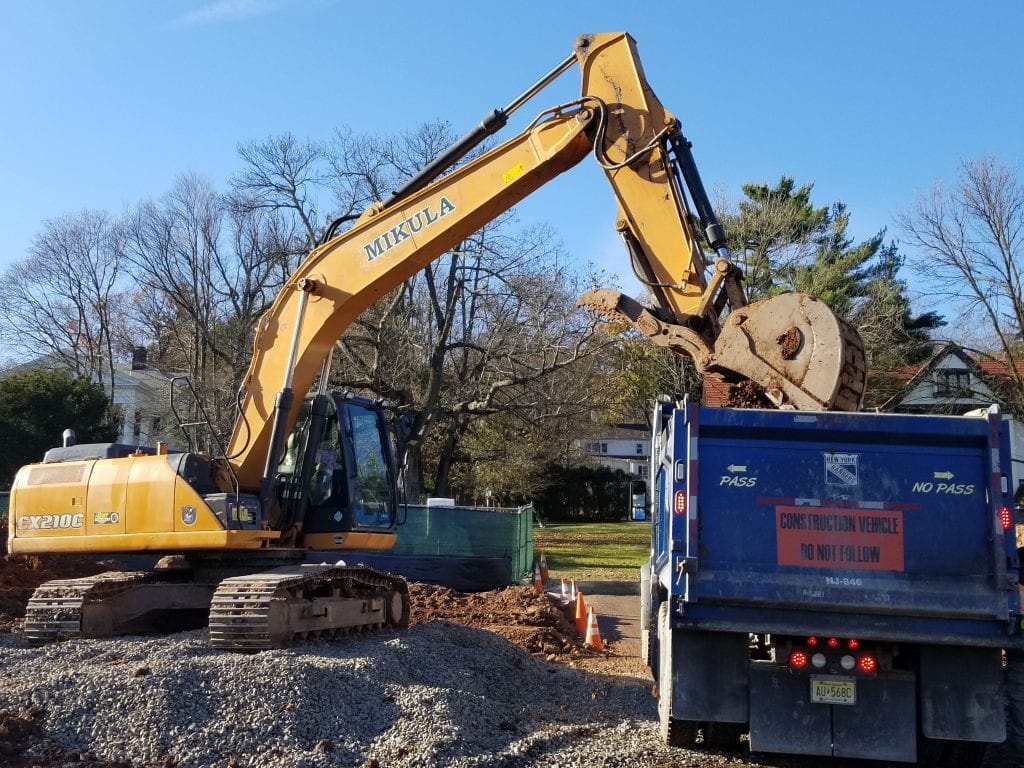3 Easy Facts About Excavation Companies Explained
Wiki Article
Trencher Can Be Fun For Anyone
Table of ContentsThe Greatest Guide To Concrete Contractors10 Easy Facts About Trencher DescribedSome Known Details About Excavation Companies Grading Contractors Can Be Fun For Anyone6 Easy Facts About Excavation Contractors Near Me Explained


Scrapers or Pans excavate dirt in one area, haul and also unload the soil in one more area (excavator). It is hard to match the performance of scrapes for cut/fill dirt procedure if the haul range is much less then a mile. Scrapes are usually drawn by a rubber tire wheel tractor as well as are sometimes pushed via the cut location by an excavator.
There are lot of times that scrapers are not made use of for website grading and a dump truck is utilized: the haul may be to long, the haul might cross roadways where scrapers are not allowed, difficult rock might be experienced, equipment schedule, and so on. Discard trucks are in typical usage and also probably call for little conversation.
Numerous vehicles have a top-hinged tailgate that can not unload any type of rock larger then the tailgate width. "Rock body" beds, on the other hand, have no tailgates and can discard any size rock, although their volume capacity is lessened. These internet links show tools specifications for numerous usual dump trucks. Compaction Devices enhances the density of the soil and in some cases provides a smooth, rolled surface.
The 7-Minute Rule for Excavation Companies
From a straightforward examination pit to percussion drilling to core boring the owner has significantly much more pricey alternatives that yield increasingly better information concerning the site underground. The Owner on a 100,000 SF structure project may license twenty uninteresting areas with split spoon dirt samples taken up until rock is reached as well as then core examples of rock.Recognizing the type as well as high quality of rock (from the core examples) and location of rock (from the soils boring) is a genuine advantage in jobsite planning. Conversely, the Owner of a 100,000 SF building might determine to wage no geotechnical testing whatsoever. The choice concerning geotechnical testing is generally made by an Owner without input from the Building and construction Supervisor.
An expertise of the approximate location of the rock helps the Construction Supervisor to intend the series of steps complying with rock excavation. If rock is in one corner of a huge structure job, for example, the earth excavation could start at the contrary end of the building in order to start structure work soonest.
Beginning the foundation work early would be a great suggestion if the rock could be gotten rid of by tearing. If the rock is very hard as well as requires considerable blasting, it may be sensible to hold foundation work until the blasting is completed. The Construction Supervisor should coordinate these kinds of choices and also utilize all the technical day available.
The Best Guide To Grading Contractors
Unidentified excavation states that all rock or various other unforeseen products (omitting dangerous products) experienced in the sitework will certainly be the obligation of the Service provider at no change in agreement expense. An unclassified excavation is simpler from a book-keeping viewpoint and also places the obligation site work contractors for geotechnical problems onto the Sitework Professional.Exactly How Water Influences Sitework? It's impressive what a heavy rain can do to a building and construction project. Prior to the rainfall, the website might be dry, heavy tools efficiently moving planet, the various other professions smoothly doing their job. Within hrs the project can be a sloppy, mud-hole with worker effectiveness reduced to concerning 10%.
In a lot of locations of the globe, the Building and construction Manager must keep in mind a straightforward reality: IT WILL CERTAINLY RAINFALL. Excellent preparation can decrease the damages and also disturbance of a hefty rainfall to a jobsite. Often the excavation and grading is left to the Sitework Professional (and their Foremen is responsible to supervise and route the hefty tools and also operators).
As A Result the Building Manager have to be continually mindful of what rainfall will certainly do to the task website. It is not uncommon for the Sitework Foreman to function their hefty devices for maximum performance and also hope it doesn't rainfall. One of the most effective ways to plan for rainfall is to slope all qualities to drain pipes and to smooth rolled the surface area before a rain.
Demolition Things To Know Before You Buy
The Building Manager general excavating should be discerning sufficient to guarantee that hefty rainfall does not quit working on the job longer than needed. Daily discussions with Sitework Foremen may be site contractors required to achieve this goal. Any time excavation is required listed below the existing aquifer on a task, the procedure of dewatering have to be taken into consideration.In a really cohesive soil, the water travels so gradually via the clay or silt that dewatering is not usually essential for the reasonably short time of excavation. Dewatering may be required for a solitary ground excavation or for an entire project website. One of the most typical dewatering techniques are trench drains, deep wells and well points.

Ground water seepage can also be lowered by cutoff techniques such as sheet piling. The prices for dewatering can be incredible, including tools leasing, labor and also electrical energy (or gas). High dewatering expenses have faded the profit margins on much too several jobs. The many variables detailed below make the job of approximating dewatering costs really challenging, and also very inexact.
This choice needs to always be taken into consideration when assessing the possibility of dewatering. Obviously the alternative is only feasible if gravity can run the water to reduced ground. Trench drains can be reduced with a backhoe and also full of a rugged, granular product (# 4 stone for instance), yet care needs to be worked out in choosing the water outlet kind and place.
How Grading Contractors can Save You Time, Stress, and Money.
A siphon, by interpretation, uses climatic pressure to lug water from one elevation, up over a challenge, to a reduced elevation. The pipes in a siphon system should be airtight as well as some resourcefulness is frequently needed to completely fill up the siphon pipe. The siphon pipeline must be full for the siphon to start.A deep well contains a pump, tube and an upright well casing. The pump intake is at the base of the well covering (normally some smashed stone is put there as a filter medium) (excavating contractors). The water is pumped up the pipe, out of the well casing, as well as to a suitable discharge location.
In a rugged sand, for instance, a huge location can be pumped to near the pump intake altitude. A less permeable dirt, on the other hand, decreases the performance of a deep well. Because the pump is usually at the bottom of the deep well, there are no elevation constraints due to vacuum lift, and deep wells can reduce the groundwater over 50 feet.
On the base of the wellpoint there is a 2 foot long display and also valve, water jets out of this valve and produces an opening right into which the wellpoint pipeline can be decreased. This opening is typically made a bigger size (for instance 10 inches) to enable a coarse sand backfill to help filter the water (mini excavator).
Report this wiki page